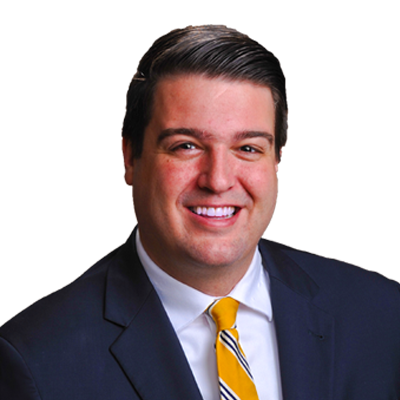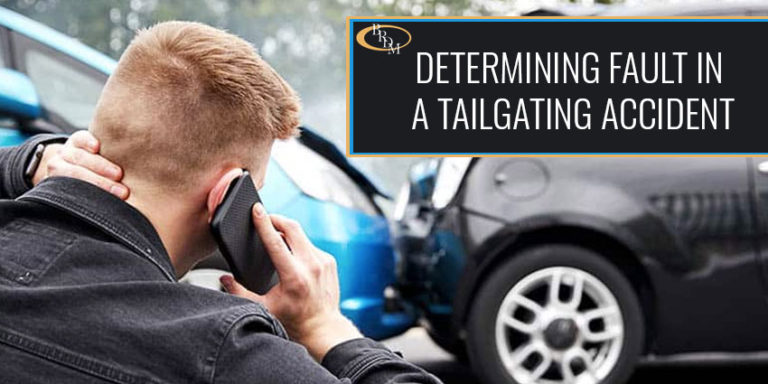Let’s face it. We have all been guilty at one time or another of not paying quite as much attention to the road as we should when driving. Luckily, this does not always result in an auto accident or even a traffic violation. But what happens when the driver of the car in front of you isn’t paying close attention to the road and stops suddenly, and you hit them from behind? Were you tailgating? Most rear-end collisions are assumed to be the fault of the following car that struck the person in front of them. However, that is not always accurate. In this article, we will discuss common causes for rear-end accidents, how to determine who is to blame for the accident, and therefore, financially responsible, and what you should do if you or someone you care about has been injured in a rear-end collision.
Common Causes for Rear-End Accidents?
A rear-end accident occurs when a driver stops on the road and the driver behind them doesn’t. There are a number of reasons a driver may suddenly stop, such as to avoid an obstacle in the road, a child or animal darting into traffic, driving in an unfamiliar area – especially when it is congested or has a lot of pedestrian traffic, and when the driver does not give their full attention to the road and their surroundings (i.e., distracted driving.) Regardless of the reason, rear-end accidents happen simply because there is not enough space between two cars to allow the following car to stop in time to avoid the collision.
Common causes of rear-end accidents include:
- Road rage
- Driving too close to the car in front/tailgating
- Lead driver stops suddenly
- Defective equipment, broken taillights, brake failure
- Excessive speeding
- Speed not appropriate for road or weather conditions (including hydroplaning)
- Making a sudden lane change
- Distracted driving (e.g., texting while driving or other distractions inside the vehicle)
- Backing up intentionally in traffic
- Certain medical conditions (e.g., seizures)
- Poor eyesight and driving at night
- Driving under the influence of drugs or alcohol
Under Florida law, “The driver of a motor vehicle shall not follow another vehicle more closely than is reasonable and prudent, having due regard for the speed of such vehicles and the traffic upon, and the condition of, the highway”. Florida Statutes § 316.0895
Safe Following Distance
But what is ‘reasonable and prudent’? To determine what is a ‘reasonable and prudent’ following distance you must consider many factors that affect a car’s ability to stop. Some of those factors are the speed and flow of traffic, the weather, time of day, road conditions, the amount of traffic, the size and weight of the vehicle, as well as its mechanical condition. You must allow sufficient time and distance to be able to react. A driver is expected to maintain control of their vehicle at all times, even when something unexpected happens. The more distance between your vehicle and others, the more time you have to react.
The Florida Drivers License Handbook states that drivers are required to keep a minimum following distance of four seconds. (Increase following distance during unfavorable weather or traffic conditions.)
To determine your following distance:
- find a stationary object on the side of the road, such as a mile marker post, signpost, freeway exit marker, etc.
- watch to see when the rear of the vehicle in front of you passes that marker, and
- begin counting until your front end reaches the same stationary object. Count “One thousand-one, one-thousand-two, one-thousand-three, one-thousand four.”
You should be able to count to at least one-thousand four before reaching the stationary object. If you arrive sooner, reduce your speed, find another object to use as your marker up ahead, and count again.
This four-second rule should be applied when the road and weather conditions are good. Being reasonable and prudent, and exercising care of duty would require that a driver increase their following distance when the situation has more risk. Situations such as:
- when it is raining, and the roads are wet
- low visibility times of day – dusk, dawn, nighttime, fog
- when being passed (more space in front of your vehicle so the pass can be completed safely)
- carrying a heavy load or pulling a trailer. (The extra weight makes it more difficult to stop quickly and steer correctly.)
- when stopped behind another vehicle on an incline; it may roll back before moving forward.
And when following:
- Motorcycles. The chances of a motorcyclist losing control of their bike are greater on wet or gravel roads, or metal surfaces such as bridges. Allow yourself more stopping distance to avoid hitting the motorcycle.
- Emergency vehicles. Following a fire truck responding to an emergency closer than 500 feet is illegal.
- Vehicles required to come to a stop at railroad crossings, such as city buses, school buses, and vehicles carrying hazardous materials.
- Vehicles with a blocked rear view. Drivers of trucks, buses, vans, or vehicles pulling trailers may not be able to see your vehicle when you are directly behind them. If your vehicle is being followed too closely, slow down and keep to the right.
Fault and Liability for Rear-End / Tailgating Collisions
It is vital that when determining liability or fault in a rear-end auto accident, all the factors that led up to the collision must be considered. While it is not always the case, the majority of rear-end collisions result in the following driver being found at fault.
For those collisions where the lead driver is found to be at fault for a rear-end collision, some of the most common reasons are: a) the driver failed to signal before changing lanes, b) backs up on purpose after stopping, and, c) broken tail lights, which prevent the following driver from seeing the lead driver’s signal that they are stopping.
Fault for a car accident can be tied to a driver’s negligence or if they violated a motor vehicle statute. A driver’s violation of vehicle statutes can be used as proof they were at fault in the accident. Almost every state has laws against tailgating, however, proving car accident liability in court can still be difficult, even when it seems like it should be clear-cut. Photos of the scene, eyewitness recollections, and police reports should be used to prove the other driver was at fault. You may also need to prove that you did nothing that helped create the accident, such as having a brake light out.
If you’re thinking about a lawsuit after a tailgating accident, talk to an experienced attorney first. Never give a statement to the other party or their insurance adjuster. After a collision, do not admit responsibility until a full investigation has taken place. A rear-end crash requires a factual determination of legal liability and the appropriate compensation for victims. When multiple parties are at fault, the law apportions legal liability amongst all parties.
Contact Us Today
Having a knowledgeable, trusted personal injury attorney working for you can make the difference in ensuring you get full compensation for your injuries and damages. Your attorney will know where to find the evidence you need to support your claim. At Battaglia, Ross, Dicus & McQuaid, P.A., we listen to you and want to hear your story!
When you contact us, we will take the time to get to know you and understand all the ways your life has been affected by your accident. We pride ourselves on being empathetic, compassionate, and caring. This is just one of the reasons we are Florida’s top-rated personal injury attorneys – providing personalized legal advice addressed to meet your individual needs.
From the first call, you will know that we will be there with you, helping you to navigate through what can be a complex, difficult, and emotionally challenging time. We strive to provide you with all the information and resources you need. We are dedicated to making your life easier. From start to finish, we will promptly answer all your questions and provide the best legal advice, so you can make informed decisions about your future.
We build trust through open, timely communication, and straightforward legal advice. We are an award-winning, established personal injury law firm, fighting for our clients for over 60 years, and have recovered more than $145 million in awards.
Contact us today and we will fight to get the results you deserve.



